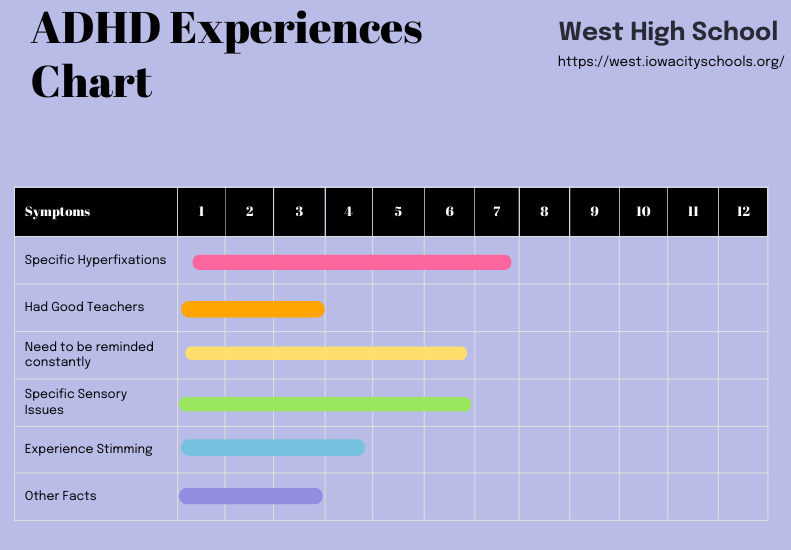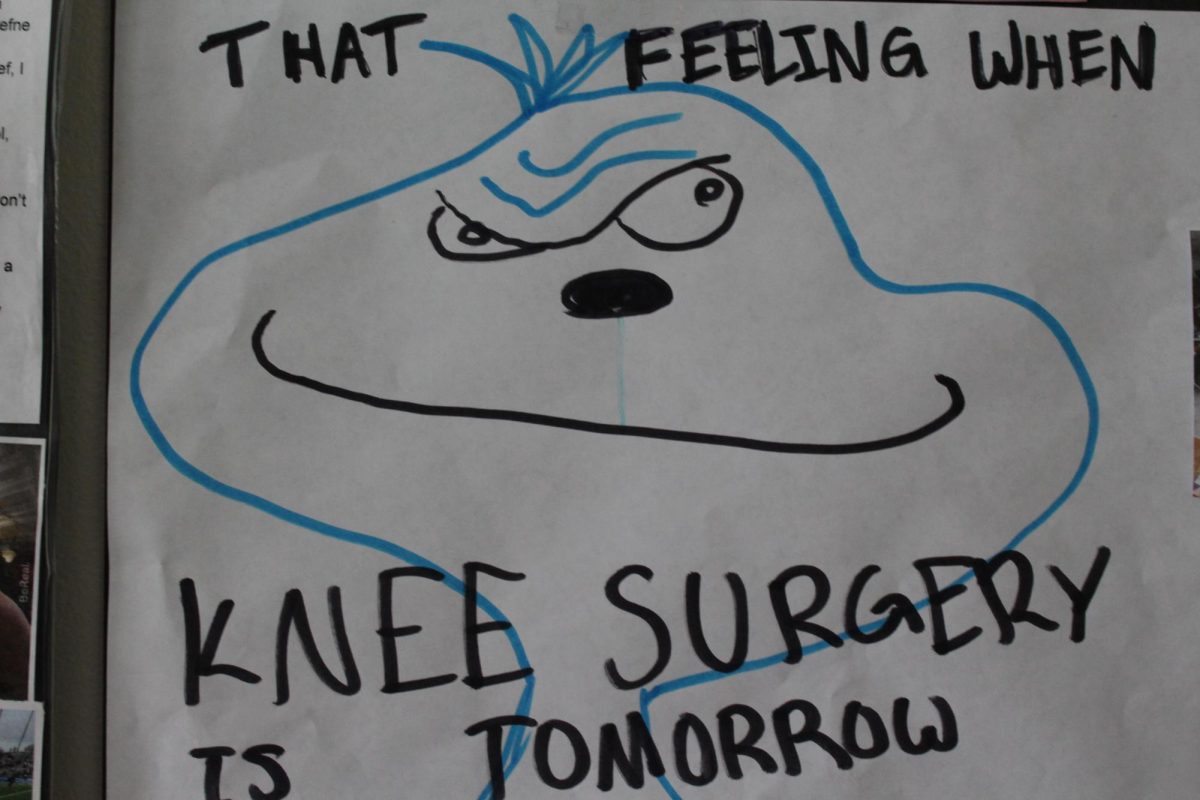
Tick tock. The clock keeps going off. You swing your legs nervously, and the teacher tells you to stay still. And you try, you really do. But your mind is so focused on other things that you can barely register the way your legs are moving. Did I forget my lunch? I hope that the new season will prove some of my theories. I have some fresh new ideas to perfect that art project. Your necklace is perfect for fidgeting, so much so that you don’t know that you are unintentionally breaking the necklace as you speak. Tick tock. The teacher stands up and yells at you, and you are perplexed – sure you have done nothing wrong to emit such a response. The necklace breaks, pouring its particles all over the floor. The school bell goes off and dismisses everyone for the day, but you are requested to stay inside. Tick tock. Your thoughts proceed and your legs resume swinging.
“Attention Deficit Hyperactivity Disorder” (ADHD) is a chronic disorder that includes difficulty paying attention, hyperactivity, and impulsivity. It is one of the most common mental health disorders in the world, especially among children. “I don’t remember [when I was diagnosed],” Vivian Williams ‘27 admits, she always knew she had ADHD – there was never a moment in her life that she was unaware of her diagnosis.
When ADHD was first introduced as a disorder among people, it was primarily studied in young – particularly white – boys. Any girls who exhibited these traits were labeled as overdramatic or sensitive, and it merely worsened the stereotypes for people of color. Originally, ADHD was two diagnoses both called ADD (Atte- ntion-Deficit Disorder) but with different qualities. One side of the spectrum was for those who were hyperactive and inattentive, while the other side was for those who were mainly inattentive. In 1987, the American Psychiatric Association released a revised criteria and combined the subtypes into one diagnosis: ADHD.
Symptoms for ADHD vary from person to person. There are many types of symptoms but most are in three categories. Predominantly Inattentive Presentation – Having trouble staying focused, organized, finishing tasks, or following instruct- ions and/or conversations. Hyperactive-Impulsive Presentation, with many having trouble staying still. Combined Presentation is a combination of both. ADHD tends to run in families, often passed down from parents to children.
ADHD treatment works in multiple different ways, but all of them work by increasing the levels of important chemicals (neurotransmitters) in the brain. These neurotransmitters include dopamine and norepinephrine. Dopamine is described as the pleasure chemical, as norepinephrine is the chemical that releases attention and cognitive function. Because ADHD is a diagnosis that has very diverse symptoms, all patients react differently to these medications : stimulants, non-stimulants, and antidepressants.
Stimulants are the most common type of medications used to treat ADHD, and work on approximately 80% of children taking the proper type of stimulant and amount of doses. Stimulants are considered controlled substances, and can help with the dopamine and norepinephrine released into the brain. These medications are more likely to be overused and can cause substance abuse disorders.
Non-stimulants are prescription medications, but aren’t controlled substances, meaning people are less likely to abuse them. These medications take longer to work and you may not feel the full effects unless you regularly take them for about 3-4 weeks. They can work up to 24 hours, improving attention and impulsivity.
Antidepressants haven’t been approved by the FDA (Food and Drug Administration) for ADHD treatment, though healthcare providers do prescribe them alone or in combination with a stimulant. They also provided more dopamine and norepinephrine transmitted into the brain. But antidepressants controlling the serotonin levels – Selective Serotonin Reuptake Inhibitors (SSRIs) – haven’t made any improvements in treating the ADHD symptoms. But SSRIs combined with a stimulant are helpful for anxiety disorders and depression. Do you take stimulants and SSRIs? If so, how did they help or impact you?
Antidepressants haven’t been approved by the FDA (Food and Drug Administration) for ADHD treatment, though healthcare providers do prescribe them alone or in combination with a stimulant. They also provided more dopamine and norepinephrine transmitted into the brain. But antidepressants controlling the serotonin levels – Selective Serotonin Reuptake Inhibitors (SSRIs) – haven’t made any improvements in treating the ADHD symptoms. But SSRIs combined with a stimulant are helpful for anxiety disorders and depression. Do you take stimulants and SSRIs? If so, how did they help or impact you?
- Decreased Appetites
- Weight Loss
- Difficulty Sleeping
- Rebound Effect
- Anxiety
- Tics (at random, not relating to tourette’s syndrome)
- Minor Growth Delays
- Stomach Problems
- Changes in blood pressure and heart rate
Vivian has two older sisters, and all of them have ADHD, so having a group phone call results in every voice speaking over the other with topics most aren’t able to c- omprehend. Though there are experiences that aren’t as positive, such as rejection from their fellow peers. “So it was like early October And I was put in a group chat with five people,” Hana Bun ‘27 explains. “… and they were talking about going to an escape room and then I said “what day and time?” And they started talking about how I couldn’t come because I would mess them up and slow them down. So they all went and were like taking pictures and videos and posting them online and I felt so left out. It wasn’t fun.”
ADHD isn’t brought up enough and it should have more attention and awareness. More than 9.4% of people in the U.S. have ADHD, and the treatment and care they get for it is excruciatingly unhelpful. There will be more chances for people to get things sorted and cleared out, and more chances for them to get it wrong. We must make sure that everyone is able to get the proper treatment and insight they need to pass in a society meant for neurotypicals. Tick tock. The time is running out.















